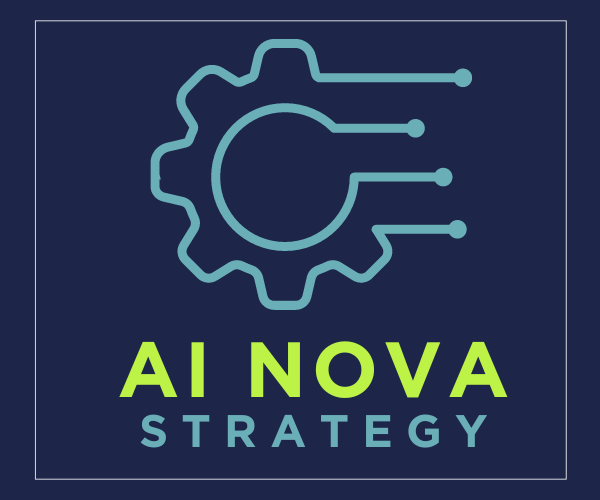I attended the AI Summit 2024 For Everyone last Saturday, October 26. I met students, developers, speakers, and AI consulting fellows AI consulting fellows who are revolutionizing business with AI. I also met Walter Greenleaf from Stanford, whom I greatly admire. I’m excited about the future of immersive visual reality (VR) in healthcare but still a little worried about VR’s possible misuse. The Summit had a positive vibe, with many breaks with cookies and a lunch with many vegetarian options.
Gopi Kallayil, Google’s Chief Business Strategist AI, started the Summit by asking, ‘Will you trust your life to AI? The life of your children? Well, that’s what you do when you and your family ride in an autonomous vehicle.”
Kallayil urged attendees to think of one big competitive thing to add to their company and how deploying AI could help. “Seek the business challenge first and then work back”- a fundamental principle of AI consulting for businesses.
Ran Nu from NVIDIA pointed out that computing power has increased 10 millionfold over the last 10 years. She discussed an AI factory where you put a token in and get intelligence out. She expressed that AI would augment human creativity and productivity by orders of magnitude.
Sharon Mandell, CIO of Juniper Networks, said that startups should begin their AI projects knowing the regulatory requirements, like ISO requirements. She also said that people change slowly, which will slow AI implementation across a company. When it comes to problems worth pursuing, Mandell suggests going after things that are hard without AI and impossible problems that you couldn’t do before AI, like big data problems. Ivan Lee, Datasaur, commented that just as one vehicle (i.e., minivan, sports car, pickup truck) doesn’t suit everyone, there will not be one LM with the highest ROI for every business. In the future, organizations will use many different models, some off the shelf and some built in-house. The accuracy of the model can be improved by prompting, RAG [Retrieval-Augmented Generation (RAG) is the process of optimizing the output of a large language model, so it references an authoritative knowledge base outside of its training data sources before generating a response], and then fine-tuning.
Philip Rathle, CTO Neo4j, talked about GraphRAG. and how it can improve LLMs’ accuracy and long-term reasoning capabilities.
| Rathle compared ChatGPT to a parrot: learns random sentences from random people, talks like a person but doesn’t really understand what it is saying, and occasionally speaks absolute nonsense. But, a parrot, unlike a ChatGPT, is a cute little bird. |
Rathle went into how GraphRAG can improve the accuracy of LLM results. GraphRAG improves the standard RAG methodology by utilizing a graph database for contextual information, enhancing the input for large language models.
Ram Menon, CEO of Avaamo (a multimodal AI healthcare service) and very engaging speaker talked about how 90% of people still prefer voice interactions to online interactions and that each consumer service call today costs the provider ~$20 dollars. Menon stated, “With AI agents, they will cost $0.02.” He presented the patient journey, something we all have probably experienced, and wished for something better, and broke it into a system-like component of parts.
Avaamo is working on AI agents for all the parts.
The medication AI assistant and test results agent need 100% accuracy. Making the perfect healthcare AI assistant is hard. In addition to requiring 100% accuracy, medical protocols, like colonoscopy, vary from hospital to hospital, and patients in different parts of the US like different tonal nuances and degrees of empathy.
The Education panel, which included Peter Noris, an Ed Fellow at Stanford, Simon Shim, a Professor at SJSU, Sadid Hasan, Microsoft, and moderator Walter Greenleaf, spoke about how education should prepare students for the future. AI can help personalize learning. There will also be the potential to lose privacy as personal AI assistants follow their emails, texts, calls, and schedules. Hasan quoted futurist William Gibson: “The future is already here; it’s just not evenly distributed.” He meant that today, AI, computers, and the internet are accessible to some but not all students. The panel agreed that, like in the development of aircraft, there will be many crashes along the way.
The healthcare panel comprised Ram Menon, Walter Greenleaf, Alaa Youssef, a Stanford postdoctoral researcher, and moderator Alan N McKellar, VP of engineering at JanusHealth. The panel mentioned that there will be many new ways of monitoring patients, like medical wearables, voice analytics, and sensors. These devices will give clinicians a window into patients’ thoughts and emotions. It will be essential to have strong privacy policies. They discussed the need for an AI roadmap for businesses to integrate these new technologies successfully. The panel noted that medical device engineers must learn to fit their products into the complex healthcare system. Greenleaf has worked with the VA for many years with his visual reality devices to improve mental health. The VA is the largest healthcare system in the US, with 180 medical centers and 25 centers for innovation.
Based on the presentations and discussions at the AI Summit, significant work remains before AI can be fully integrated into various industries, particularly in healthcare, where 100% accuracy is required. Privacy concerns, regulatory compliance, and the need for equitable access across different populations remain crucial challenges that must be resolved. AI business consultants and AI consulting firms will play a crucial role in helping organizations develop their AI roadmaps and make smarter decisions about AI deployment, particularly in fintech, biotech, biopharma, and healthcare sectors where the stakes are exceptionally high.
